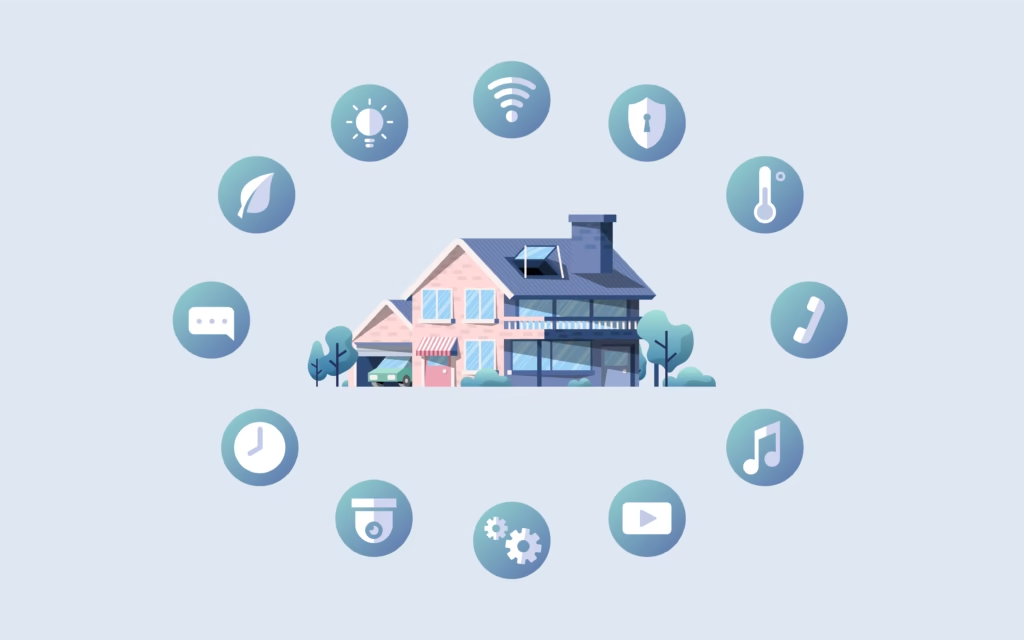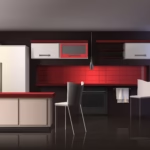Creating a smart home no longer requires a massive budget or technical expertise. With advancements in affordable smart technology, you can transform your home into a more connected, efficient, and secure space for under $500. From smart speakers and lighting to security cameras and thermostats, there are numerous cost-effective options available to enhance convenience and automation. Whether you’re looking to control devices with voice commands, monitor your home remotely, or optimize energy usage, a budget-friendly smart home setup is within reach.
This guide will walk you through everything you need to know about setting up a smart home on a budget, including choosing the right ecosystem, selecting affordable yet high-quality devices, and optimizing their functionality. By following this structured approach, you can enjoy the benefits of a smart home without overspending. Whether you’re a beginner or someone looking to expand an existing setup, these recommendations will help you create a seamless and intelligent living environment.
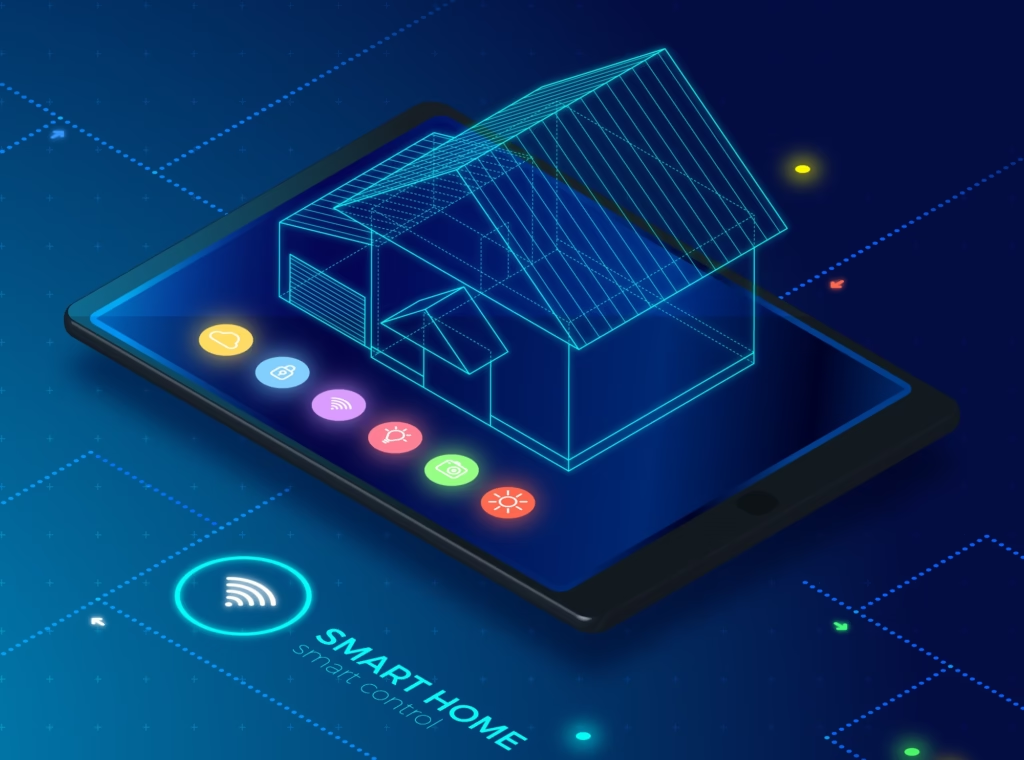
What You Need for a Smart Home Setup
A smart home setup typically includes devices for security, lighting, entertainment, and convenience. The essential components include:
- Smart Speakers and Hubs – Control devices through voice commands.
- Smart Lighting – Automate lights for efficiency and ambiance.
- Smart Plugs and Switches – Remotely control appliances.
- Smart Security Devices – Cameras, doorbells, and locks for safety.
- Smart Thermostats and Sensors – Regulate temperature and monitor your home.
Choosing a Smart Home Ecosystem
Before purchasing devices, decide on a smart home ecosystem that best suits your needs. The three most popular ecosystems are:
1. Amazon Alexa
Amazon Alexa is one of the most widely adopted smart home ecosystems, thanks to its affordability and compatibility with a vast range of third-party devices. The Echo line of smart speakers and displays serves as a hub for Alexa, allowing you to control everything from lights to security cameras using voice commands. Alexa’s automation features, such as Routines, help streamline daily activities. For example, you can set a routine that turns off all lights and locks doors when you say “Goodnight Alexa.”
2. Google Assistant
Google Assistant is another robust ecosystem that integrates seamlessly with Google services such as Calendar, Maps, and Gmail. It is particularly useful for Android and Google Home users who want a cohesive experience. Google Nest devices offer top-tier voice recognition and automation capabilities, making controlling multiple smart devices straightforward. Google Assistant’s natural language processing also makes it easier to set up complex voice commands and contextual requests.
3. Apple HomeKit
Apple HomeKit is designed for users deeply embedded in the Apple ecosystem. It offers superior security and privacy features, ensuring that all devices communicate securely. While HomeKit is not as open to third-party manufacturers as Alexa or Google Assistant, it provides excellent automation through the Apple Home app and Siri voice control. HomeKit also allows geofencing features, meaning your smart home can adjust settings based on your location, such as unlocking the door when you arrive home.
Choosing one ecosystem ensures compatibility and ease of use. If you’re unsure, Amazon Alexa and Google Assistant offer the most budget-friendly options.
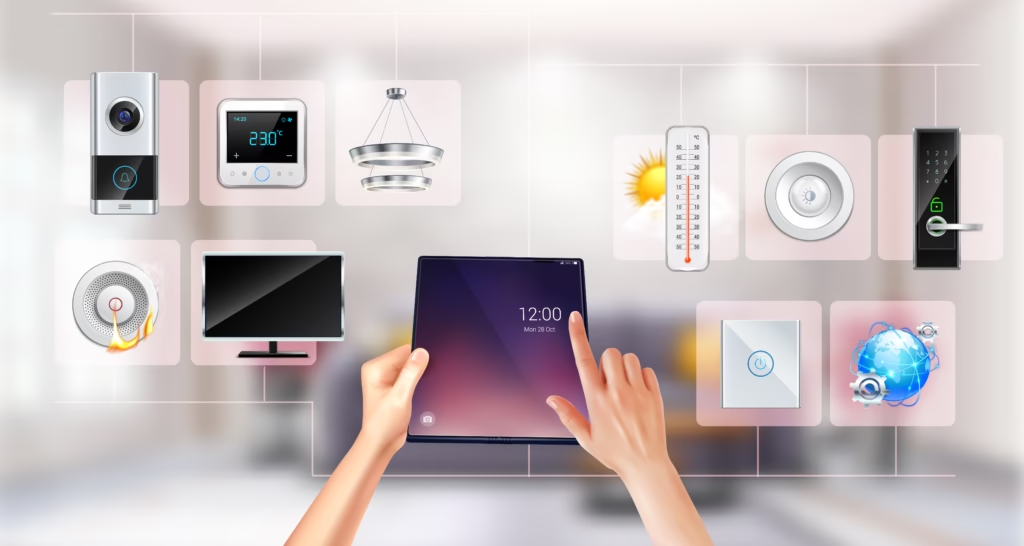
Recommended Smart Home Devices Under $500
1. Smart Speaker and Hub ($50 – $100)
A smart speaker acts as the central hub for controlling your devices. Here are budget-friendly options:
- Amazon Echo Dot (5th Gen) – $50
- Google Nest Mini – $49
- Apple HomePod Mini – $99
These smart speakers offer high-quality voice recognition and integrate with their respective ecosystems. They enable hands-free control of your smart home by executing voice commands. Many also include additional features like music streaming, smart reminders, and intercom capabilities.
2. Smart Lighting ($30 – $70)
Smart lighting adds convenience and energy savings. Consider these options:
- Philips Hue White and Color Ambiance Bulb (2-Pack) – $60
- Wyze Smart Bulbs (2-Pack) – $30
- TP-Link Kasa Smart Light Bulbs (2-Pack) – $35
Smart lighting can significantly enhance your home’s ambiance. These bulbs can be dimmed, scheduled, and controlled remotely. Some smart bulbs even allow for color customization, creating different moods in various rooms. Scheduling lights to turn on or off based on occupancy or time of day helps save electricity.
3. Smart Plugs and Switches ($20 – $40)
Smart plugs allow you to control regular appliances remotely. Top picks include:
- Amazon Smart Plug – $25
- TP-Link Kasa Smart Plug (2-Pack) – $30
- Wyze Smart Plug (2-Pack) – $20
Smart plugs make any traditional appliance “smart.” By plugging lamps, coffee makers, or space heaters into these devices, you can control them remotely via a smartphone app. Some smart plugs also offer energy monitoring features, helping you track power consumption and cut down on unnecessary usage.
4. Smart Security Devices ($80 – $150)
Home security is a crucial part of a smart home. Budget-friendly options include:
- Wyze Cam v3 – $35 (Indoor/Outdoor Camera)
- Blink Video Doorbell – $50
- Ring Indoor Cam – $60
- Eufy Security Smart Lock – $99
Smart security devices provide peace of mind by offering remote surveillance, motion detection alerts, and two-way audio communication. Video doorbells allow you to see and talk to visitors even when you’re not home, while security cameras monitor indoor and outdoor activities for added protection.
5. Smart Thermostats and Sensors ($100 – $150)
Regulating temperature can save on energy bills. Affordable options include:
- Amazon Smart Thermostat – $80
- Google Nest Thermostat – $130
- Wyze Climate Sensor (3-Pack) – $25
Smart thermostats learn your schedule and optimize heating and cooling, reducing energy waste. Sensors placed in different rooms help detect temperature variations, ensuring balanced climate control throughout your home.
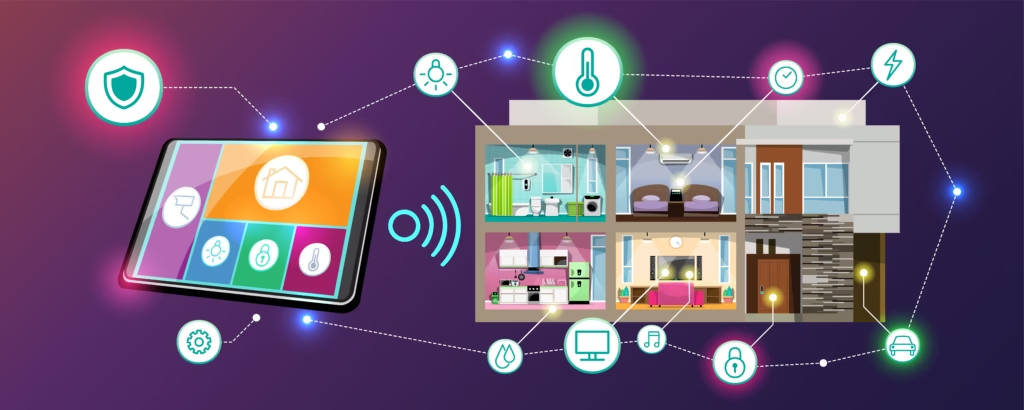
Setting Up Your Smart Home
Step 1: Install Your Smart Hub or Speaker
A smart hub is essential for managing all connected devices in your home. Once you’ve selected your ecosystem, set up your hub or smart speaker by connecting it to WiFi and linking it to your accounts. Ensure voice commands are enabled for hands-free control.
Step 2: Set Up Smart Lights
Replace existing bulbs with smart bulbs and connect them to your chosen ecosystem. Group lights by room for easier management and create automation settings for enhanced convenience.
Step 3: Connect Smart Plugs
Plug in your appliances and pair them with your home assistant. Set schedules for turning devices on/off based on your routine.
Step 4: Install Security Cameras and Doorbells
Position cameras in high-traffic areas. Configure motion alerts and enable video storage.
Step 5: Optimize Heating and Cooling
Install your smart thermostat and set temperature preferences for efficiency.
Writer’s Thoughts
A fully functional smart home doesn’t have to cost a fortune. With careful planning, you can set up an efficient smart home under $500. By choosing the right ecosystem, selecting budget-friendly devices, and optimizing automation, you can enjoy convenience, security, and energy efficiency without breaking the bank. Additionally, integrating smart technology into your daily life allows for better energy management, improved safety, and increased comfort. The beauty of a smart home is that it can evolve over time—starting with a few essential devices and expanding as new technology becomes available or as your budget allows. With a thoughtful approach, even a budget-friendly smart home can provide a seamless and futuristic living experience.
Smart Home Setup Checklist Under $500
| Device Category | Recommended Products | Estimated Cost |
|---|---|---|
| Smart Speaker/Hub | Amazon Echo Dot / Nest Mini | $50 – $100 |
| Smart Lighting | Philips Hue / Wyze Bulbs | $30 – $70 |
| Smart Plugs | TP-Link Kasa / Amazon Plug | $20 – $40 |
| Smart Security | Wyze Cam / Blink Doorbell | $80 – $150 |
| Smart Thermostat | Nest Thermostat / Wyze Sensor | $100 – $150 |
| Total Budget | $280 – $500 |
With this setup, you’ll have a smarter, safer, and more efficient home—all within budget!
